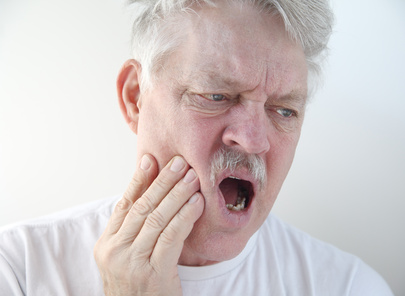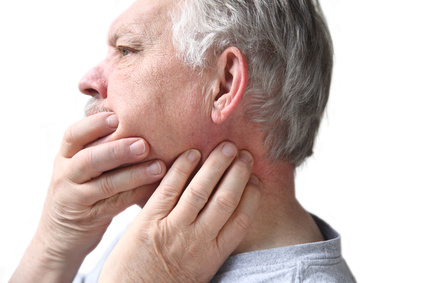
Take A Bite Out of Life! Physical Therapy for Temporomandibular Joint Dysfunction (TMJ)
December 6, 2017
There's Help for TMJ Disorder
TMJ dysfunction affects more women than men and is typically diagnosed for the first time when patients are in their 20s-40s, though the symptoms may have existed for much longer with lesser severity. The early signs of TMJ disorder are often overlooked. For those with TMJ pain, physical therapy can help with:
- Alleviating pain
- Reducing inflammation
- Reducing muscle spasms
- Releasing scar tissue when applicable
- Relaxing surrounding muscles, tendons and ligaments
One of the most common causes of TMJ disorder is bad posture. Sitting at desks and hunching over keyboards can place the neck, spine and jaw at an unusual angle, putting undue pressure and strain on the area. Conditions in which arthritis is a symptom can cause pain in the jaw joint.
Stress can result in chronic jaw clenching and teeth grinding, both of which can cause damage and strain on the joint. The disc that cushions movement of the joint can become displaced, resulting in the popping and clicking noises associated with TMJ dysfunction.
More than 10 million people have been diagnosed with TMJ disorder. Other reported symptoms with the condition include jaw fatigue, particularly when chewing, along with ringing in the ears, neck pain and even dizziness.

Take A Bite Out of Life! Physical Therapy for Temporomandibular Joint Dysfunction (TMJ)
The temporomandibular joint (TMJ) is what connects the bottom jaw to the skull. The joint is a hinge that makes it possible to eat and speak, but it can be subject to pain and inflammation from multiple sources. It's a complex system composed of bone, muscle and ligaments and any disturbance or misalignment to the area can result in dysfunction.
The condition is common, but it's often difficult to discern the exact cause. People with the condition may hear and feel clicks and pops when they move their jaw and in some instances it can feel as if the jaw is "stuck" for a brief moment. People who clench their teeth during the day or engage in nocturnal teeth grinding often experience TMJ dysfunction.
TMJ pain can occur on one or both sides of the face. Patients with the condition may experience headaches similar to migraines, feel pressure behind the eyes, have an earache, or a change in the way their teeth fit together. Pain may be present when they chew or yawn. In the most severe cases, the jaw may become locked in an open or closed position.
The pain of TMJ dysfunction can appear after a blow to the jaw, an accident in which whiplash was a factor, as a result of a dental problem, or a misalignment of the neck, spine or jaw. Any action or change that causes trauma to the jaw can result in swelling of the joint and surrounding soft tissues.

Relief and Function with Physical Therapy
The focus of your therapy will be to realign the joint and relax the muscles, tendons and ligaments around it. Your physical therapist will want to ensure that all of your bones and joints are in alignment and in their proper place.
Depending upon what your physical therapist finds during his/her examination, manual manipulation may be employed to increase movement, relieve pain and align the joint in its proper position. Your therapist will provide you with exercises that you can perform to strengthen the joint and area around it to restore motion and alleviate pain in the future as TMJ disorder can often return.
Heat and cryotherapies may be applied to relieve pain and reduce inflammation and swelling. Electrical stimulation or ultrasound therapy can be used to accomplish the same goals. If the disorder is due to a dental problem, your physical therapist can refer you to a dentist specializing in TMJ dysfunction.
Your physical therapist can recommend ergonomic solutions to lessen stress on the back, neck and jaw and offer suggestions on how to perform tasks in different ways that won't place undue strain on the jaw joint and soft tissues. You'll also receive information and instruction on sleep positions that will open the airways and won't stress the neck, spine or back.
TMJ dysfunction can happen to anyone. It's a painful disorder that affects the way you eat, your diet, and your ability to communicate. Your physical therapist has the means to restore your TMJ to full functionality and aid in reducing the chances of another episode.